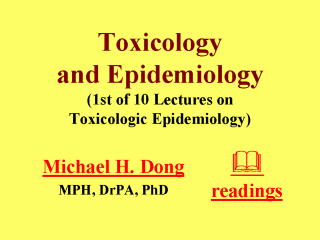 |
This is the first of 10 lectures on toxicologic epidemiology.
Until recent years, epidemiologists and toxicologists were preoccupied with justification
for their own professional existence and advances. Today, some epidemiologists and
toxicologists are married under the broader mission of public health. In its simplest
term, toxicologic epidemiology is the study of the frequency and distribution of adverse
human health effects caused or modified by toxic agents or harmful materials. There are
difficulties both in defining and measuring of adverse health effect, and in bringing a
more precise boundary for toxic agents or harmful materials. This series of lectures is an
attempt to circumscribe the boundary of toxicologic epidemiology, a silent but rapidly
growing field in industrial and developing countries. The titles of the 10 lectures are: (1)
Toxicology and Epidemiology; (2) Public Health and Risk
Assessment; (3) Toxicology and Risk Assessment; (4) Epidemiology and Risk Assessment; (5) Toxicologic Side of Epidemiology; (6) Epidemiologic Side of Toxicology; (7) Human Exposure Assessment I; (8) Human Exposure Assessment II; (9) Characterization of Health Risk; and (10) Toxicologic Epidemiology. |
